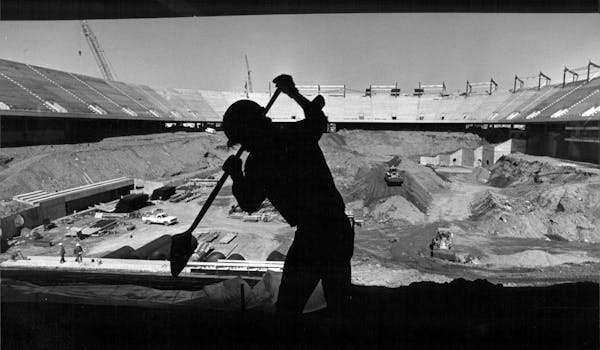Nobody has been more involved in making the Twin Cities a four-pro-sport city than local businessman Wheelock Whitney, and looking back to the building of the Metrodome, Whitney is convinced that the Twins would have left if a covered stadium wasn't built in 1982.
And the Vikings, through Max Winter and Mike Lynn, might have followed the Twins, but the building of the Dome was responsible for a 30-year lease.
Whitney recalled how hard it was to get Calvin Griffith, the former owner of the Twins, to sign a 30-year lease to play in the Dome, but he finally signed one that permitted him to move if attendance didn't reach a certain point.
Normally, a new stadium attracts great attendance, but in the first few years the Metrodome didn't have air conditioning, so it was OK for one NFL game a week, but baseball was a different story.
And it didn't help when the first year that the Twins played in the Metrodome, Griffith traded star catcher Butch Wynegar and star shortstop Roy Smalley to the Yankees.
Like the current Twins and Viking stadiums, plenty of political battles were fought before the Metrodome was built, with a number of legislators fighting the $55 million stadium budget.
"It hardly cost the people in Minnesota anything," recalled Whitney. "They put on a tax on liquor and hotel rooms, and it only lasted for a few years."
The two men in charge of getting the stadium built — Don Poss and Dan Brutger — were determined not to go a nickel over budget. In fact, if I am correct, the stadium was built under budget and wound up paying for itself and even having a surplus for years.
Like the new Vikings stadium plans, there was a lot of talk about an east downtown redevelopment adjacent to the Metrodome, but the only new business was Hubert's Bar.
The late John Cowles Jr. was very active in getting the Dome built to make sure the Vikings and Twins remained, and Cowles, then the CEO of the Star Tribune, got into a battle with members of the newsroom who believed it was a conflict of interest for the newspaper to be involved.
And St. Paul interests were not in favor of Minneapolis getting the Dome built, and there was plenty of campaigning against it.
Talk about a fight, a lot of Gophers football fans were upset when the late Paul Giel got the U to move its games to the Dome, and as a result Memorial Stadium was torn down.
As Whitney predicted, the Dome made the Twin Cities a major league market because of the two World Series, a Super Bowl, the many NCAA basketball tournaments regionals and Final Fours and the like.
Whitney was asked what was his fondest memory of the Dome.
"It had to be that '87 and '91 World Series and the Homer Hankies and the idea that we won four games played in the Dome," Whitney said. "We had home-field advantage and we won all four home games in both World Series, and of course, that Jack Morris victory in '91 in the seventh game. That was something that was etched in my memory and has been there all these years. I have to say nothing could beat winning those two World Series and putting Minnesota on the big-league map. Because I think that we need the Twins and the Vikings in this community to keep our major league status."
History will report that among the arenas and stadiums torn down here were Met Stadium, Met Center, Memorial Stadium and the Metrodome.
And the Twin Cities area will have bragging rights about having three new stadiums — Target Field, TCF Bank Stadium and the new Vikings stadium, something most cities of this size don't have.
Josef Newgarden's win in IndyCar's season-opening race has been disqualified. O'Ward named winner
U football continues strong activity in transfer portal with QB addition

